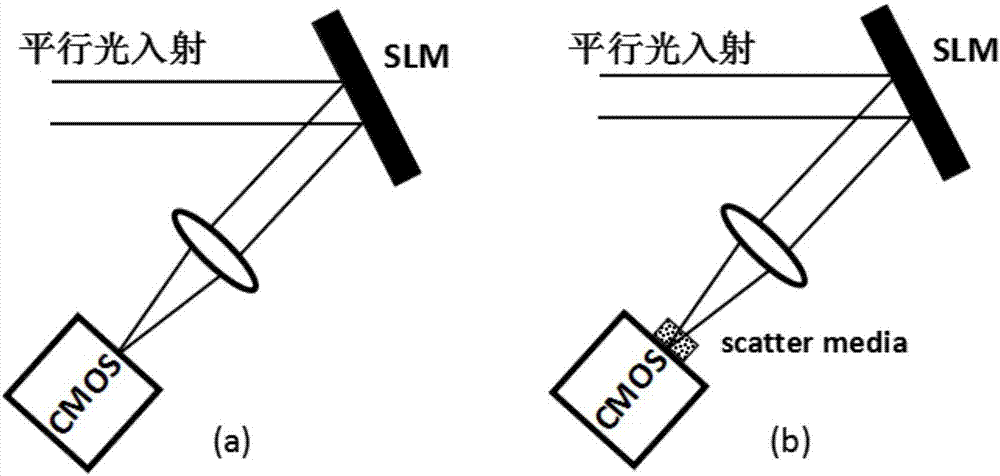High speed aberration correction method based on machine learning
A technology of aberration correction and machine learning, which is applied in the field of high-speed aberration correction, can solve problems such as slow correction speed, and achieve the effects of slow solution speed, improved microscopic imaging resolution, high-speed and accurate correction
- Summary
- Abstract
- Description
- Claims
- Application Information
AI Technical Summary
Problems solved by technology
Method used
Image
Examples
Embodiment Construction
[0032] The present invention will be further described below in conjunction with drawings and embodiments.
[0033] Since the use of wavefront detectors will increase the complexity of the optical path and bring a series of problems such as wavefront measurement errors, the present invention does not use wavefront detectors, but directly analyzes the wavefront phase distribution according to the distribution of focused spots .
[0034] Embodiments of the present invention are as follows:
[0035] 1) The parallel light beam is first reflected by the spatial light modulator that does not load the wavefront phase distribution, and then focused by the lens to obtain an ideal focused spot at the focal plane position;
[0036] 2) Use the Zernike polynomial to calculate the wavefront phase distribution of the incident beam using the following formula:
[0037]
[0038] Among them, a k Indicates the kth Zernike coefficient, k=1,2,3,4,5,6,...n, Z k Represents the expression of t...
PUM
 Login to View More
Login to View More Abstract
Description
Claims
Application Information
 Login to View More
Login to View More - R&D
- Intellectual Property
- Life Sciences
- Materials
- Tech Scout
- Unparalleled Data Quality
- Higher Quality Content
- 60% Fewer Hallucinations
Browse by: Latest US Patents, China's latest patents, Technical Efficacy Thesaurus, Application Domain, Technology Topic, Popular Technical Reports.
© 2025 PatSnap. All rights reserved.Legal|Privacy policy|Modern Slavery Act Transparency Statement|Sitemap|About US| Contact US: help@patsnap.com



